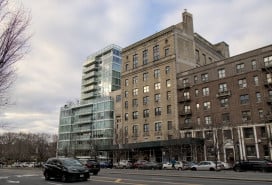NYC Renovation Chronicles: White shoe contractors, minor league pros & prima donnas

In this economy, just about any contractor – no matter how ill-equipped for your particular renovation – will promise stunning results. Be on guard for used car salesmanship: Roominess is nice, but if you need to park it on the street in the West Village, you need a Hyundai, not a Hummer.
Moreover, just because a contractor is good at one thing doesn’t mean he is perfectly suited for something else. A corporate high-rise contractor, for example, with their high overhead and union wages would cost you a second mortgage to panel the pantry. Likewise, unless you have a decade to kill, the gut renovation of your Park Avenue condo should not be entrusted to a one-man shop.
In my 20-plus years of urban residential experience, I have worked with a wide cross-section of contractors with varying results. Before embarking on your renovation road trip, decide who of the following should be doing the driving:
The Jack-of-All-Trades
The jack-of-all-trades is a one-man band – a skilled handyman capable of doing a little bit of everything. He can install cabinets, add a partition, change light fixtures, put up shelves, do basic tiling and complete other minor tasks. This is an economical choice if appropriate, but even with the best of its type (where the quality is good and the guy reliable), the size of a project a jack-of-all-trades can take on is obviously limited.
The Mom-and-Pop Shop
Other than a few specialty licensed trades such as electricians and plumbers, a mom-and-pop shop uses no sub-contractors. Instead, they rely on their own loyal crew of laborers to do the majority of the work. Mom-and-pop outfits are small family-like businesses, and part of their appeal is their informality. The owners of a mom-and-pop shop will involve themselves in the work, spending a lot of time at the site often developing personal relationships with the clients. On the down side, because they rely on an in-house crew for most tasks, they are limited in their ability to do unconventional work. So a project with a lot of complicated cabinetry, customized hardware, intricate metalwork, or custom lighting would be better served by a different contractor type.
The Minor-League Professional
The minor-league pro is the reliable go-to contractor for clean, conventional projects that require a level of documentation and schedule tracking. While minor-league professionals use some in-house labor, they farm out most of the work to subcontractors, which provides a degree of specialization you will not see in the mom-and-pops. Also, unlike the mom-and-pop-shops, they rely on industry standard paperwork such as AIA (American Institute of Architects) Contracts, Requests for Payments and Change Orders. And the minor-league pros are comfortable with scheduling software. This allows them to keep better track of the job and finish sooner. On the down side, they have developed a systemized way to do work efficiently, and they are not comfortable deviating from this system. If a project is too complex, if it requires the services of a temperamental artisan, or if there will be design changes over the course of the work, these guys bristle. They are competitively priced, but only for the type of work they are used to doing.
The White Shoe Contractor
Doing a two million dollar renovation on Fifth Ave? Mom-and-pops and minor-league pros can handle typical renovations, but in cases where top quality work and personality polish are requirements, the White Shoe Contractor is probably a better choice. The white shoe contractor is the long established high quality contractor with an impressive resume of high-end jobs in high-end buildings. The white shoe contractor utilizes expert sub-contractors well versed in their areas of specialty. There is very little a white shoe cannot do, and they do very nice work. But as you get what you pay for, you pay for what you get. The cost of using a white shoe contractor could easily be 50 to 100% higher than a minor-league pro outfit. In addition, white shoe contractors frown on using owner-provided sub-contractors, which they will tolerate at a cost - tacking on 10 to 20% to your sub's fee for "coordinating" their labor.
The Prima Donna
Not so much a separate species as a personality type, the prima donna is the renovator’s (and architect’s) nightmare. The act of building involves a cooperative effort between the owner, architect and contractor. Problems always arise during construction – a light fixture doesn’t fit, a particular stone tile arrives late, an access panel is discovered to be required where it will not look good, etc. This is part of the process and a good contractor will cooperate with the team to come up with a reasonable quick solution. The prima donna will use such opportunities to assign blame and charge more money. Be on guard. Prima donnas are often charming, capable contractors with good subcontractors, but they are also stubborn, difficult, high maintenance complainers who will make you wish you never considered your renovation. To avoid them, do your homework and check references carefully. I had one prima donna renovation job that accumulated over 50 change orders, each of which was fraught with lengthy arguments and lots of finger pointing. By the end of the job, my clients regretted not having taken the completed model apartment down the hall.
Next up: Five tips for avoiding change orders.
David Katz (www.KATZarch.com) has been practicing architecture in New York City for the last 20 years. Detail oriented, nervous and a little neurotic, he specializes in co-op and condo renovations.
Disclaimer: Information provided herein is not to be construed as professional advice. Readers are urged to consult with a licensed architect regarding their specific circumstances prior to undertaking any renovation work. (We do not want any buildings falling down!)


























